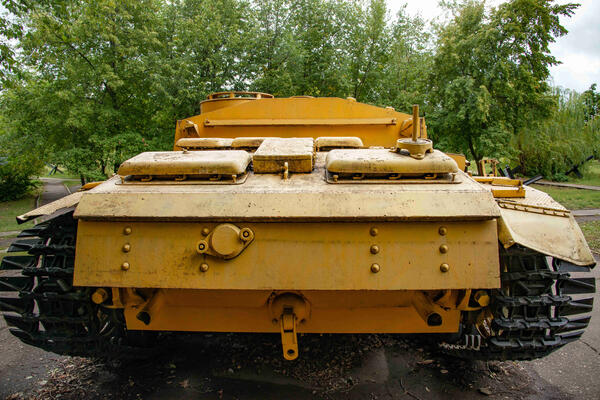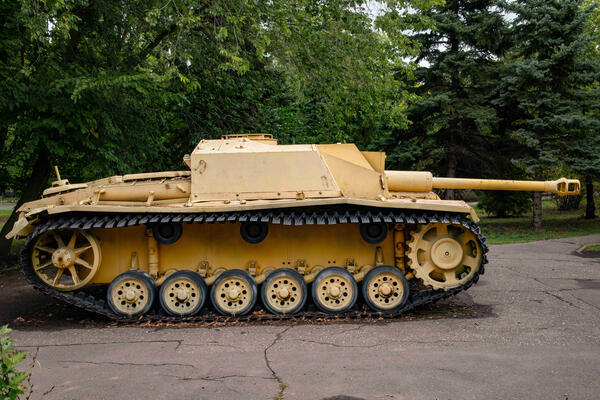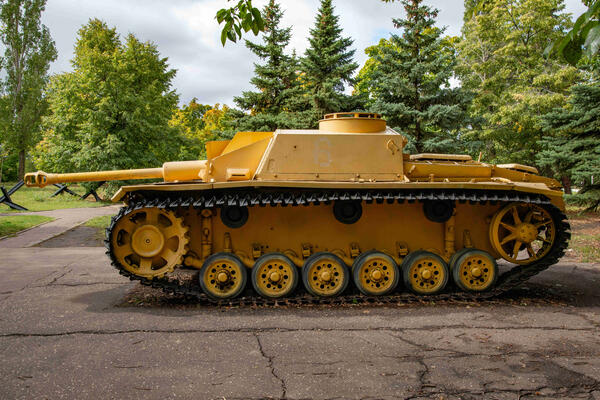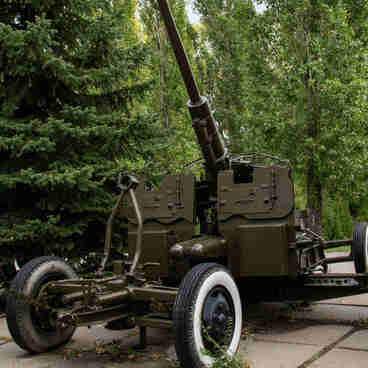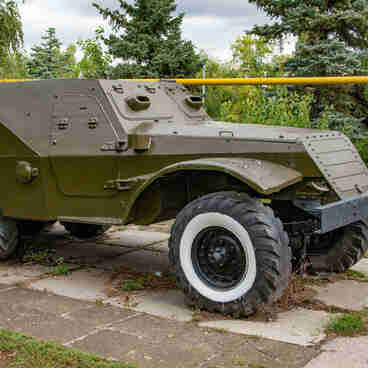The Sturmgeschütz, or StuG, was a self-propelled assault gun of the German Army. The development of assault guns had begun in Germany back in 1936 on the initiative of the future Field Marshal Erich von Manstein.
The most successful project was proposed by the Daimler-Benz company. The gun was developed on the basis of the T-3 medium tank. In 1940, serial production was started, and in the spring of that year, the StuGs first saw action during the campaign in the West. There they proved to be an effective means of infantry fire support.
Since the middle of 1942, after the StuG III was fitted with a long-barreled 75mm gun, these assault guns were mainly used as anti-tank weapons. The most substantial modification of the assault gun on the T-3 tank was the StuG 40 Ausf. G model.
Self-propelled assault gun StuG 40 Ausf. G was mass-produced from December 1942 to April 1945. During that time, more than 8 thousand guns of this modification were manufactured. The StuG was named after the 75mm long-barreled tank gun of the 1940 model and the letter G denoted a modification of the assault gun.
The Sturmgeschütz guns of this model had 50 mm thick frontal armor, which was reinforced by 30 mm armor plates. In addition, such assault guns had a commander’s turret and so-called eastern tracks with a width of 550 mm to increase cross-country off-road mobility.
During the Second World War, the Sturmgeschütz entered service with assault brigades, as well as anti-tank units of infantry divisions. This assault gun was used by the Gruppe Chevallerie, which was part of the Army Group Center.
During the Velikiye Luki offensive operation in November 1942 — January 1943, the city of Velikiye Luki was liberated. In one of the battles, this self-propelled gun was disabled by precision fire from Soviet gunners and tankers. It sank in a swamp.
In April 2002, on the territory of Pskov Oblast, the StuG 40 Ausf. G was raised from the swamp by the fighters of the “Height” search club and later was transferred to the museum.
The most successful project was proposed by the Daimler-Benz company. The gun was developed on the basis of the T-3 medium tank. In 1940, serial production was started, and in the spring of that year, the StuGs first saw action during the campaign in the West. There they proved to be an effective means of infantry fire support.
Since the middle of 1942, after the StuG III was fitted with a long-barreled 75mm gun, these assault guns were mainly used as anti-tank weapons. The most substantial modification of the assault gun on the T-3 tank was the StuG 40 Ausf. G model.
Self-propelled assault gun StuG 40 Ausf. G was mass-produced from December 1942 to April 1945. During that time, more than 8 thousand guns of this modification were manufactured. The StuG was named after the 75mm long-barreled tank gun of the 1940 model and the letter G denoted a modification of the assault gun.
The Sturmgeschütz guns of this model had 50 mm thick frontal armor, which was reinforced by 30 mm armor plates. In addition, such assault guns had a commander’s turret and so-called eastern tracks with a width of 550 mm to increase cross-country off-road mobility.
During the Second World War, the Sturmgeschütz entered service with assault brigades, as well as anti-tank units of infantry divisions. This assault gun was used by the Gruppe Chevallerie, which was part of the Army Group Center.
During the Velikiye Luki offensive operation in November 1942 — January 1943, the city of Velikiye Luki was liberated. In one of the battles, this self-propelled gun was disabled by precision fire from Soviet gunners and tankers. It sank in a swamp.
In April 2002, on the territory of Pskov Oblast, the StuG 40 Ausf. G was raised from the swamp by the fighters of the “Height” search club and later was transferred to the museum.

